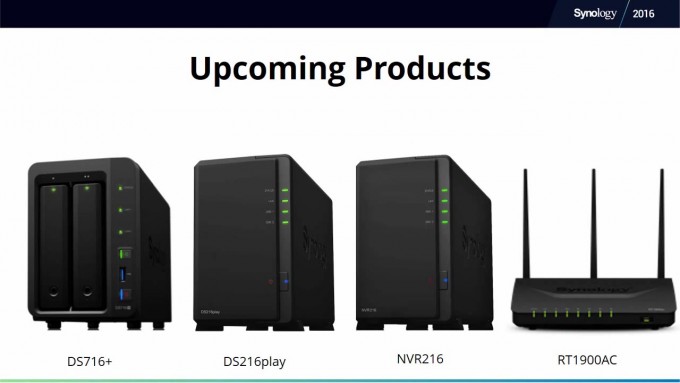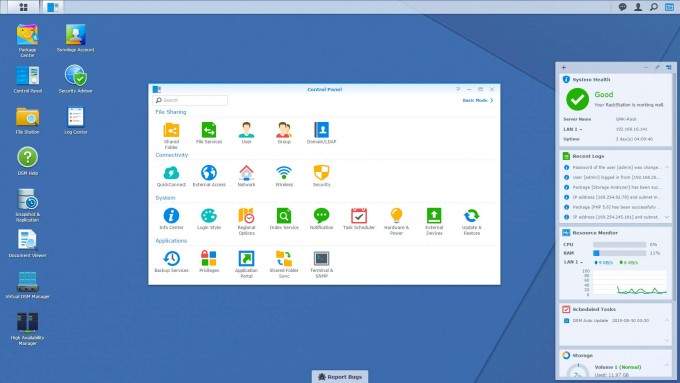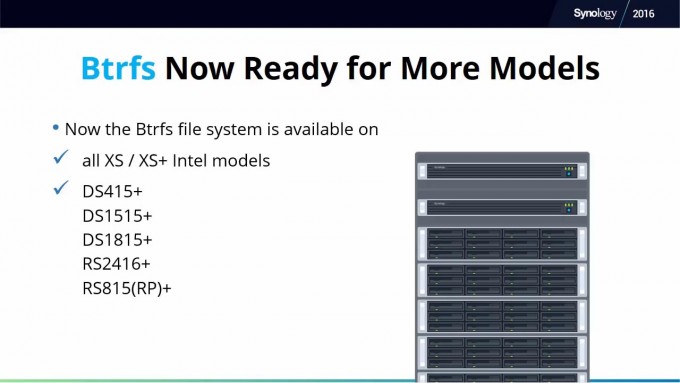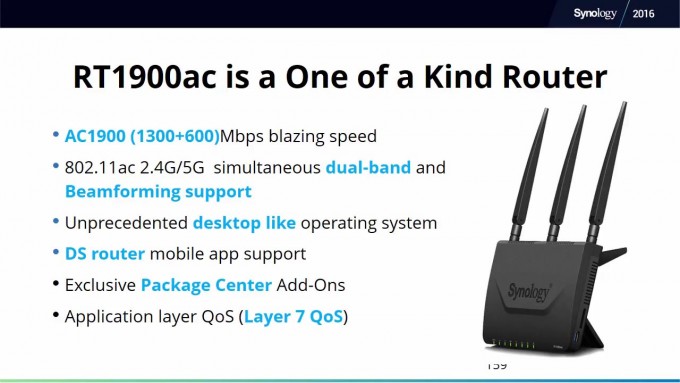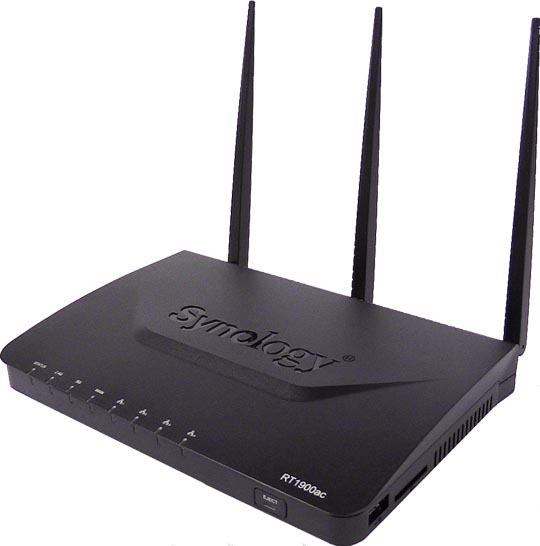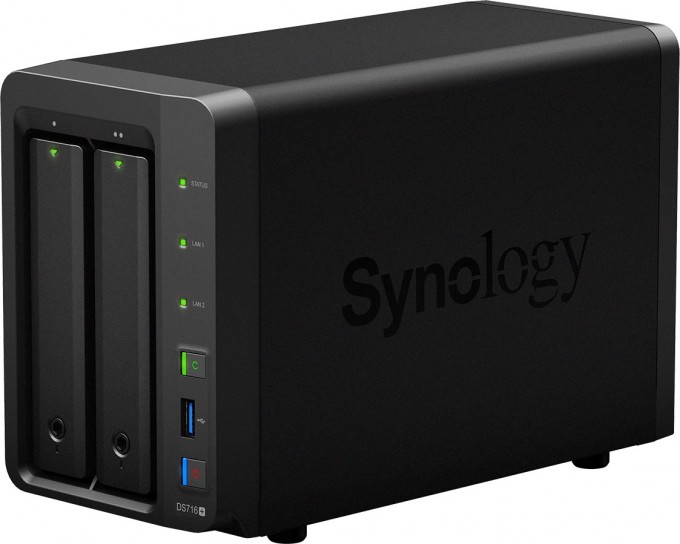- Qualcomm Launches Snapdragon 4 Gen 2 Mobile Platform
- AMD Launches Ryzen PRO 7000 Series Mobile & Desktop Platform
- Intel Launches Sleek Single-Slot Arc Pro A60 Workstation Graphics Card
- NVIDIA Announces Latest Ada Lovelace Additions: GeForce RTX 4060 Ti & RTX 4060
- Maxon Redshift With AMD Radeon GPU Rendering Support Now Available
A Quick Look At Synology’s DSM 6.0, DS716+ NAS & RT1900AC Router
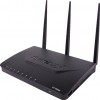
Synology prepares for 2016 with refreshes of business and home NAS units, the release of its very first router, and a massive update to its OS, DiskStation Manager. DSM 6.0 introduces Docker and Virtualized environments, and something that’s sure to grab attention, support for Btrfs.
There are some big changes coming from Synology, as it rolls out new products for both businesses and home users. A major new release of its venerable NAS operating system, DiskStation Manager version 6.0, will be coming out soon, along with new hardware, both a refreshing of existing models as well as a new product range.
Update: DSM 6.0 beta is now available for selected models, you can find out more here.
To be released over the next year, there will be the new OS, DSM 6.0 (now available, link above), and new NAS units, including the DS716+, DS216play, and NVR216. A new product will also soon be making a grand entrance, as Synology introduces its first router, the RT1900AC.
While there is a huge amount of information to cover, we’ve distilled it down to the major releases, as well as highlights of important features. Full details, including demonstrations, can be found in an accompanying video from Synology. First of all, we’ll go over what’s new in the OS, central to all of Synology’s NAS solutions, the DSM.
DiskStation Manager (DSM) 6.0
For the most part, the new features in DSM 6.0 are targeted towards business users, as well as the higher-end enterprise models. However, there are several new technologies that will pique some interest.
At the low-level, DSM 6.0 will bring broader support for 64-bit storage solutions, allowing for more than 4GB of RAM, and increase the number of concurrent users. Petabyte (1,000 terabytes) storage volumes will become available as well.
Docker and Virtual DSM instances can be rolled out, providing granular control over user access. Docker allows for custom DSM instances for specific users, effectively restricting certain features of the DSM. Virtual DSM takes this further, and allows the DSM instance to be moved from system to system, without downtime. Being virtualized, this has the added benefit of full system backups, even down to the configuration settings.
A wider selection of cloud services have been enabled, including synchronization, snapshot replication, and remote recovery. The snapshots allow for very frequent backups to be made on specific folders (every minute), which can then be replicated to a cloud backup solution, or another Synology NAS.
The synchronization of the snapshots is also extremely granular when combined with the replication. The local network NAS can be configured with very frequent backups, every minute or hour, but with daily or weekly replications sent to off-site storage. You can specify the number of iterations to save, too.
For home users, Synology brings support for the Apple Watch. With the app installed, you can use simple gestures and voice control to access or create notes, or even control music streaming from the NAS. Video Station gets an update to streamline media controls, as well as better support for Windows 10 enabled devices that can switch between view modes (portrait/landscape).
The final feature that’s sure to pique some interest, is broader roll-out of a new file system, Btrfs. DSM has been using ext4 for a long time, and the latest generation of file systems have matured significantly. While not as well-developed as ZFS, Btrfs brings many new technologies that are sure to be useful, even for home users (providing your specific model is supported).
Arguably the biggest benefit of Btrfs will be the ability to perform checksums on data at read-time, providing fault tolerance against bit-rot – the loss or corruption of data. The other benefits tie in more with the snapshot and replication of data, enabling these features at a file-system level, rather than at the software level.
Btrfs also enables various forms of storage pools and volumes, effectively mimicking various RAID states, but is significantly more intelligent in the handling of odd-sized hard drives; however, this is not so important for Synology NAS systems, since the DSM handles a lot of this already.
The DSM 6.0 beta is now available for selected models, and will be updated continuously over the next few months. Be aware that once updated, you can not roll back the install, so do not install it on a live system you intend to use regularly.
RT1900AC Router
Out of the new products, the most interesting for Synology would be the introduction of its first wireless router, the RT1900AC. What will set it apart from nearly all other routers is the software. The Synology Router Manager (SRM) is effectively a port of DSM for the router, and a lot of the functionality will come with it.
While it’s not strictly the same as DSM, it will be very familiar and easy to use. It will include DS file and DS download, as well as plugin support that is likely to grow over time. It features many of the standard router features such as traffic filtering, firewalls, smart Quality of Service settings, as well as being able to run as a VPN or Radius server.
Specifics of the hardware have not been fully released yet, but we know that it will support up to a maximum of 1900Mbps (1300 + 600 Mbps) using dual-band 2.4GHz and 5.0 GHz, and beamforming. We’ll find out about number of ports and accompanying chipset at a later date. Currently, price is around the $200 mark at Amazon (when in stock), and slightly less at Newegg, around $190.
DS716+
While the DS715 only recently came out, a new model is coming that will effectively be a full replacement for the DS713+. One of the main criticisms for the DS715 was that it switched out the Intel Atom CPU for an unknown Alpine AL-314 by Annapurna Labs. This effectively prevented it from performing media transcoding, but it did save a lot of power. The DS715 is still an excellent NAS, but if you wanted the business features and the ability to transcode, users were limited to the DS713+.
The good news is that a direct replacement is coming in the form of the DS716+. Featuring the new 14nm Intel Braswell quad-core CPU – the mobile range of Broadwell derivatives, 2GB RAM, and the ability to perform 4K video transcoding in real-time. It also features significant gains when it comes to encryption, up to 160% faster than the DS713+ with AES256. This effectively makes the DS715 and DS713+ obsolete, since it cuts power, increases performance, and keeps the x86 processor for transcoding. The DS716+ is now available from Amazon for ~$500 (price varies) or Newegg for ~$450.
More information
Synology recently did a live presentation, covering all of the above, and much more. It covers the mobile apps, how to use the Apple Watch, as well as demonstrations of the synchronization, replication, and snapshot tools. It’s a long video, but worth checking out. You can watch it on YouTube, here.
Support our efforts! With ad revenue at an all-time low for written websites, we're relying more than ever on reader support to help us continue putting so much effort into this type of content. You can support us by becoming a Patron, or by using our Amazon shopping affiliate links listed through our articles. Thanks for your support!




